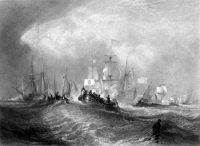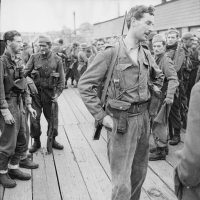Category: design
-
![Destructive & Formidable by David Blackmore [Book Review]](https://www.cold-steel.org/wp-content/uploads/2018/12/dsc_0068.jpg)
Destructive & Formidable by David Blackmore [Book Review]
Destructive and Formidable by David Blackmore is a quantitative look at British infantry doctrine using period sources from the British Civil Wars of the seventeenth century up to just before the Napoleonic wars. If anything you can see the constancy, which drove the success in battle of British forces, even when outnumbered. Development of British…
-
OR Driven Wargame Rules
I’ve been tinkering with a set of small unit wargame rules informed by operational research rather than fashions in wargaming for a couple of years. The crux of these rules is the morale mechanism.  These haven’t quite got as far as I would have liked as I’ve not really had any time to complete or playtest…
-
1689 Reading List
So far this half a shelf is my 1689 reading list for the proposed megagame about the Glorious Revolution. I’ve read some of this already, and marked up the interesting bits. Notably Bonnie Dundee and the Bruce Lenman books as well as Glencoe by John Sadler which sets the scene for the 1692 massacre very well…
-

1689 Megagame Idea
A 1689 Megagame of the Glorious Revolution In November 1688 William of Orange landed at Torbay with a combined force of Dutch and British troops. Early in 1689 the English Parliament declared for William. In Scotland and Ireland things were less clear cut, Scotland was finely balanced and Ireland was more Jacobite than Williamite. The…
-
World Building – Towns and Villages
One of the things that I often do when I am writing a story is to sketch a map of the area where the story takes place. This helps me to visualise what the characters will be able to see. The thing is though, you can’t just bang down stuff randomly (well you can, but…
-
The 200 Foot General
This is the third post on my Operational Research driven wargame rules (and it’s probably about time that I came up with a catchy name for them, ideas in the comments section most welcome). One of the most unrealistic things I find in most commercial wargames that I have read or played is that it…
-
2D Morale Chart
Further to the previous post Faith in Morale I’ve tried to synthesize the varioius readings on military psychology into a set of morale rules that might give a realistic ebb and flow to an engagement. I’ve not had a chance to test these yet, but here’s what the chart looks like. Reading through the various…
-
Faith in Morale
Does having faith give soldiers an edge in dealing with combat?
-
Book Review – Bullets and Brains by Leo Murray
Brains and Bullets: How Psychology Wins Wars by Leo Murray My rating: 5 of 5 stars Brains and Bullets is an excellent and very readable book which tries to put some hard numbers on a variety of psychological tactics that can be used to persuade your own troops to fight and the enemy to give up.…
-
Counterfeit Game Money
At Chestnut Lodge Wargames Group we design and play a lot of games involving game money. We do this to the extent that we often joke that all you need for a game are CLWG members and some (play) money. Â By definition none of this is real, but in game terms it is always genuine.…
-
Game Design Notes: World War One Strategic Battles
This was originally written as a game design session prompt for a session at Chestnut Lodge Wargames Group back in April 2004. A discussion thread on about this excellent blog post http://sketchinggamedesigns.blogspot.com.es/2014/01/the-wrinkles-of-tactics-first-world-war.html lead me to dig it out and post it here. World War One Strategic Battles Turn structure Three turns per year, March – June…
-

The Stress of Battle – Pt5 Operational Research on WW2 Heroism
This is the fifth and final part of my extended review of The Stress of Battle by David Rowland. It is such a strong piece of operational research on WW2 heroism that I thought that it would be useful for wargame designers (and players) to understand what the research evidence is for what went on in WW2 battles. This…